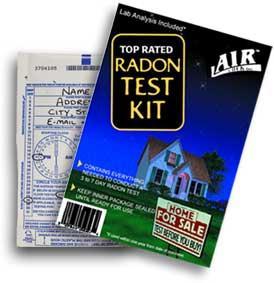Radon

What is Radon Gas?
Radon comes from the natural radioactive decay of radium and uranium found in the soil beneath a house. The amount of radon in the soil depends on the soils chemistry, which varies from one house to the next. The amount of radon that escapes from the soil and enters the house depends on the weather, soil, porosity, soil moisture and the suction within the house.
How Does Radon Get into a House?
Houses act much like large chimneys. As the air in the house warms, it rises to leak out of the attic openings and around the upper floor windows. This creates a small suction at the lowest level of the house; thereby pulling the radon out of the soil and into the house.
Is Radon Really Dangerous?
The health risk from radon is increased lifetime risk of lung cancer. In fact, radon is the second leading cause of lung cancer and the leading cause of lung cancer death for nonsmokers. Radon exposure accounts of approximately 12% of annual lung cancer deaths in the United States, or approximately 21,000 deaths. The Kansas Department of Health and Environment (KDHE) estimates that residential radon exposure in Kansas causes around 200 new cases of lung cancer annual in the state. Homeowners are encouraged to test their homes ever two years.
What is the General Procedure for Testing a Home for Radon?
Two standard methods exist for testing a home for the presence of radon gas. The Short-Term Testing Method can be as short as 48 hours and as longs as 90 days. Long-Term Testing Methods are designed to provide an annual average of radon gas. Long-Term Tests run for a minimum of 90 days and usually for 6 to 12 months. The EPA recommends performing a Short-Term Test for radon. These test kits are available at the Ford County Extension Office for a charge of $5.00.
What Do the Radon Short-Term Test Results Mean?
If the Short-Term Test comes back with a result below the EPA Action Level (4.0 pCi/L or lower), then no further immediate action is warranted. If the Short-Term Test returns with a radon value of 4.0 to 10.0 pCi/L, the EPA recommends performing a Long-Term Test to gauge the home's annual radon concentration. The results of the Long-Term Test should be used to determine the necessity of radon mitigation (reduction).
Protect Your Family...Test Your Home

Tests are available for sale at the Ford County Extension Office.
Videos on Radon
Radon Testing Can Save Your Life